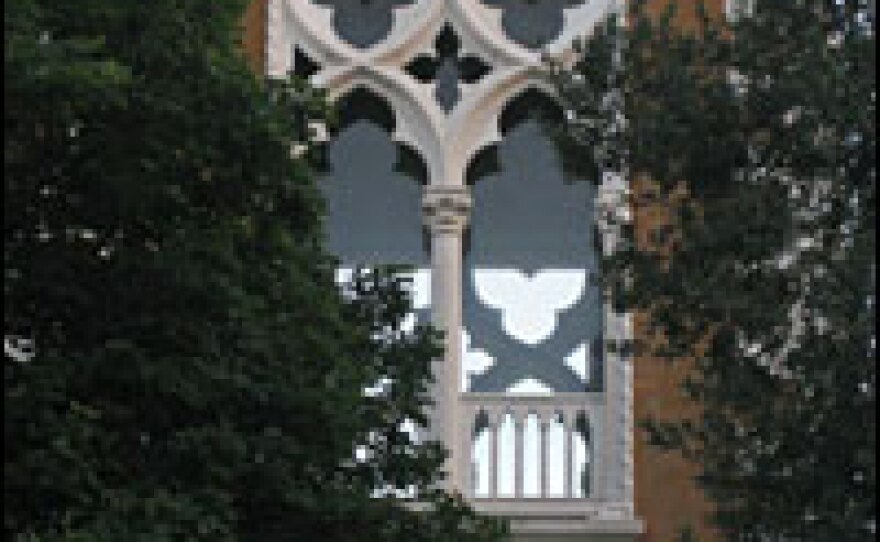
For many centuries, Venice, the lagoon city, was the liquid frontier between Europe and the Islamic world. The maritime power maintained intense economic and cultural relations with the Turks, Persians, Arabs and Mamelukes.
A new exhibit in Venice illustrates the mutual influence on ideas, customs and culture that flourished in the East-West relationship.
Adorned with crenelated decoration running along its top, the building that perhaps best exemplifies Eastern influences is the Doges' palace – the site of the exhibition, "Venice and Islam."
Cultural cross-fertilization was constant, and the latticed grilles and pointed arches on many other Venetian buildings also bear the mark of Islamic influence. Venice sent its best painters to Istanbul to paint portraits of the sultans, while it was the Arabs who taught the Venetians the art of glass-making – still the city's quintessential art form today.
On display is a 15th-century painting depicting a baptism by St. Mark in which numerous men wearing large turbans – Ottomans and Mamelukes — mingle with Venetians. Curator Stefano Carboni says the turbaned figures do not project a sense of tension or conflict but are integrated into the scene naturally.
One major piece is the so-called "Throne of St. Peter" — actually a 10th- or 11th-century stone slab inscribed with Koranic verses. A surprising item is a copy of the first printed edition of the Koran, produced not from a Muslim but from a Venetian printing press, and there's a carpet with Jewish symbols belonging to a local synagogue made by Arab craftsmen in Cairo in the 16th century.
Over the centuries, Venice's determination to trade with Muslims, whom the Vatican called infidels, earned the entire city's excommunication. Nevertheless, Venetian artists had few qualms about blending Islamic styles with Christian themes.
One striking example is a 14th-century painting of a Madonna and Child in which her robe is a rich, golden brocade embroidered with Islamic decorations.
Venice was also a crossroads through which the science, medicine and philosophy of the Middle East arrived in Europe. Young Venetian noblemen were often sent to the East to learn Arabic, Persian and Turkish, and some Doges were born and grew up in the Middle East. Meanwhile, Muslim merchants set up lodgings and warehouses in Venice. One of the most famous, the Fondaco of the Turks, still stands on the Grand Canal.
Military conflicts with the Muslim world did occur over the centuries, and Venetians even took part in some crusades, but the belligerent parties never cut off diplomatic contacts. Even after defeating the Turks in the Battle of Lepanto in 1571, Venice the pragmatic continued to trade with the Ottomans.
Mayor Massimo Cacciari says Venice never tried to impose its values, its religious beliefs or social system on the Muslim world.
"Venice had a strong sense of its identity but at the same it time it recognized the identity and values of other cultures even when it was in conflict with them," Cacciari says. "This exhibit shows us that today, either we all learn how to live side by side each with our own distinct identities, or we will be in permanent conflict."
The exhibit runs through November 25.
Copyright 2022 NPR. To see more, visit https://www.npr.org. 9(MDAzMjM2NDYzMDEyMzc1Njk5NjAxNzY3OQ001))







